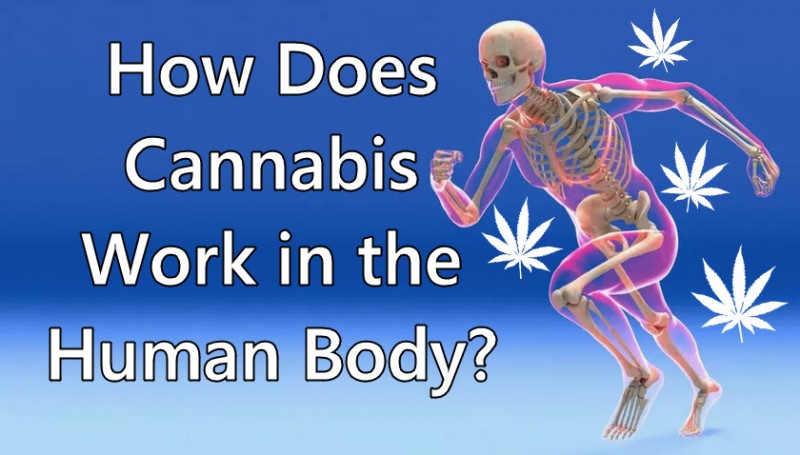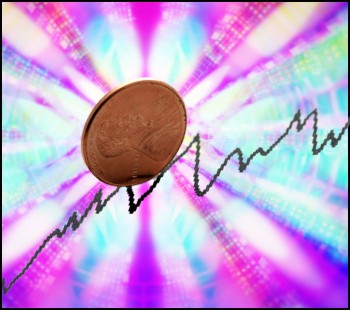How Cannabis Works In The Human Body

Cannabis is a complex and life-saving plant but many people still wonder about how it works in the human body.
It can be fascinating to learn about how it works, considering that it affects people in different ways. Scientists have already been able to identify that humans (and animals) have an endocannabinoid system, found throughout the body and the brain, which helps regulate many important processes including how we feel, think, and react. In a 2009 study, researchers have identified that the endocannabinoid system is already fully functioning in an infant before it is born.
When we consume the cannabis plant in its many forms, or even isolated forms of its two best-known compounds called tetrahydrocannabinol (THC) and cannabidiol (CBD), these compounds interact with the endocannabinoid system in a variety of ways.
The endocannabinoid system is one of the most important in the body, and scientists have found that we have receptors in almost every single organ. In fact, it’s widely thought that we have more endocannabinoid receptors in the brain than other neurotransmitters.
The main function of the endocannabinoid system is to help you achieve a state of homeostasis, which is when your body has the ideal state of balance. Homeostasis is when all the bodily systems, including the digestive, circulatory, lymphatic, muscular, endocrine, reproductive, nervous, skeletal, and respiratory, all perform at an optimum level giving you total health.
How Cannabinoids Communicate Within Your Body
The human body possesses neurons which communicate with one another as well as the rest of your body by transmitting signals that act as chemical messages, which regulate our moods, thought processes, and actions. These chemical neurotransmitters are released by presynaptic cells, travel through a synapse (like a small gap), then attach themselves to certain receptors found on a nearby neuron. The neuron, called a postsynaptic cell, then triggers a set of responses that facilitate the message to be communicated.
However, it works differently in the endocannabinoid system. The endocannabinoid system sends its messages by working the opposite way from neurons. Once a postsynaptic neuron has been activated, cannabinoids are produced from our fat cells found in the neuron. From there, they travel away from the cell to the presynaptic neuron and then attach themselves to cannabinoid receptors.
Cannabinoids interact with presynaptic cells which means they have the ability to control the set of events that occurs after the cells are activated. Think of cannabinoids as acting as a switch for the presynaptic neurons; in doing so, they control how much of a specific neurotransmitter such as dopamine is released. As a result, it has an impact on the quantity of messages received and sent by the cell.
The Cannabinoid Receptors
There are two main kinds of cannabinoid receptors in the body: CB1 and CB2. CB1 is more abundant in the central nervous system and the brain, while CB2 receptors are primarily found outside the nervous system. Some tissues have both receptors although when activated, they each result in a different action.
CB1 receptors are responsible for regulating our pain sensations, learning, memory, addiction, metabolism, nerve inflammation, heart function, bone mass, and appetite. On the other hand, the CB2 receptors regulate autoimmune conditions, allergies, inflammation, osteoporosis, stress, chronic pain, and neurodegenerative diseases.
The human body naturally produces cannabinoids that already stimulate the CB1 and CB2 receptors. We currently know of 6 naturally-occurring endocannabinoids in the body (including anandamide and 2-AG), but plant-based cannabinoids (called phytocannabinoids) also stimulate the endocannabinoid system. Anandamide is the best known endocannabinoid; it’s often referred to as the bliss molecule and it’s produced in the brain. Anandamide is responsible for important brain functions such as memory, motivation, movement, appetite, pain, and even fertility. This chemical also helps us get rid of unimportant memories, become happier, promote neurogenesis, and fight anxiety and depression.
Understanding anandamide is necessary for comprehending how THC works. It’s believed that the more anandamide you naturally have, the less important cannabis is for you. And that’s why cannabis works so well for people suffering from anxiety and depression.
Molecularly speaking, phytocannabinoids from the cannabis plant resemble the endogenous cannabinoids in our body and that’s why it’s a perfect match for the receptors. Scientists have found that there are around 85 various phytocannabinoids, although we just refer to them as cannabinoids. These are found in the trichomes of the plant; some can result in a psychoactive high while others don’t. This is why many people believe that the cannabinoids in cannabis are a natural supplement that humans can use to strengthen and boost the endocannabinoid system.
What Happens When You Consume Cannabis
Once you consume cannabis in any form, the cannabinoids enter your body by making their way through the bloodstream to the brain, then to the rest of your body. Smoking or vaporizing cannabis is the most common way people consume pot; when you inhale the smoke, THC and other cannabinoids go straight to your lungs. The lungs are lined with millions of tiny air sacs called alveoli – this is where gas exchange happens. Since alveoli has a large surface area, it’s easy for THC and the other compounds to enter the body. The lungs absorb cannabis smoke within seconds after you inhale it.
After you’ve consumed, the phytocannabinoids attach into the CB1 and CB2 receptors. This process resembles a key fitting into a lock. What happens next is that endogenous cannabinoids such as anandamide can no longer bind to the receptor sites because they are already occupied by cannabinoids such as THC and CBD. This is when you start to feel high, euphoric, and blissful. These are the common effects experienced by many people when they smoke pot or consume cannabis, although the actual effects vary depending on the strain you take as well as its terpene and cannabinoid profile.
How Cannabis Treats Certain Conditions
Here’s what we currently know about how the cannabinoids work in the human body for treating ailments:
Post traumatic stress disorder (PTSD): Patients with PTSD find great relief from their symptoms when using THC. That’s because THC works similarly to anandamide, helping them forget details that are unimportant - patients can then make use of this because it aids them in overcoming the negative memories associated with a traumatic incident while improving one’s mood.
Crohn’s disease or IBS: An abundance of CB2 receptors can be found in the gastrointestinal system, which is why it plays an important role in regulating the inflammatory response within this organ.
Overall mental health: Researchers have found that animal subjects without CB1 receptors display “psychological abnormalities” such as anxiety. Because CB1 receptors are crucial for controlling anxious feelings especially during periods of intense stress, possessing little to none of CB1 receptors can greatly affect one’s mental health.
Why Cannabis Is A Good Supplement For The Endocannabinoid System
Whether you like cannabis or not, a healthy endocannabinoid system is vital for overall health. It doesn’t mean that you need to smoke pot everyday to be healthy, but many people are of this school of thought anyway.
An endocannabinoid deficiency is what causes many illnesses ranging from your occasional headache to a full-blown chronic condition. This is why cannabis works in treating sicknesses. Other symptoms of an endocannabinoid deficiency include mood swings, insomnia, and gastrointestinal problems. You can help strengthen your endocannabinoid system by getting regular exercise, since exercises cause the body to release neurotransmitters that naturally boost the endocannabinoid system.
Stress is also known to impact your endocannabinoid system. When you are exposed to stress for long periods of time, the endocannabinoid system, like other systems in your body, experiences a burn out. Stress also contributes to inflammation and many other conditions, which is why it’s necessary to manage your stress naturally in the best way that you can.
Research shows that taking small amounts of cannabinoids, through microdosing, can be enough for a person to stimulate their endocannabinoid system, produce endocannabinoids, and create extra cannabinoid receptors. This is one of the things that can explain why some people don’t necessarily feel high after smoking pot the first time, but do better the next time around. All parts of the endocannabinoid system perform a different task although overall the its main role, as mentioned earlier, is to promote homeostasis. When the body senses that you need more endocannabinoids or receptors because this is the only way to return to a state of homeostasis, these receptors and endogenous cannabinoids are produced on demand.
Conclusion
Everyone’s endocannabinoid system is vastly different. Think of yours as unique as a fingerprint. That’s why cannabis affects everyone in a different way.
If you want to stay healthy, it’s important to pay attention to your endocannabinoid system as well. It’s no longer uncommon for people to be supplementing with cannabis or CBD to ensure that the endocannabinoid system is kept healthy to promote homeostasis and prevent disease. The science behind how cannabis works is real, and there’s tons of data about it. This is why you should never listen to anyone who says that cannabis is bad for you.






